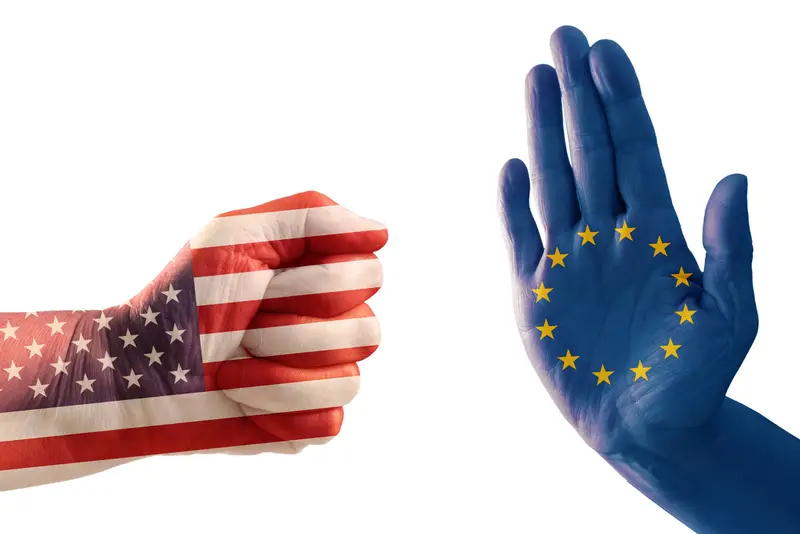President Donald Trump has successfully negotiated significant trade agreements, countering critics who doubted his aggressive negotiation tactics. These agreements are set to bring substantial investments worth hundreds of billions of dollars into the United States.
The centerpiece of these deals is a substantial agreement with the European Union. The agreement establishes a 15% tariff on most European Union goods, while Europe has committed to purchasing $750 billion worth of U.S. energy and investing an additional $600 billion in American enterprises by 2028.
Trump announced the EU agreement on July 27, 2025, following a meeting with European Commission President Ursula von der Leyen at his golf resort in Scotland. During the announcement, the president described it as the “biggest deal ever made.”
The 15% tariff represents a significant increase from the approximately 1% average that existed before Trump assumed office. However, it is lower than the punitive 30% tariffs Trump had threatened if Europe did not reach a deal by his August 1 deadline.
Under the terms of the agreement, Europe will eliminate all tariffs on American industrial goods, creating vast new opportunities for U.S. manufacturers. The EU has also agreed to purchase American military equipment and provide U.S. companies with improved access to European markets.
Von der Leyen informed reporters that the negotiations were “indeed very tough” but ultimately resulted in a mutually beneficial agreement.
Following the success with Europe, Trump announced a historic agreement with Japan. The Japanese deal involves an unprecedented $550 billion investment fund, which Trump will allocate to revitalize American industries such as energy, computer chips, pharmaceuticals, and shipbuilding.
The agreement with Japan represents the largest foreign investment commitment any nation has ever made. Japan will also face a 15% tariff on its goods, equivalent to the rate applied to Europe.
Under the agreement with Japan, the United States will receive 90% of the profits from the investment fund, while Japan will open its markets to U.S. cars, trucks, and agricultural products. Japan has also committed to purchasing 100 Boeing aircraft and increasing rice imports from the United States by 75%.
Trump celebrated the agreement with Japan during a meeting with Republican lawmakers, asserting that he had “signed the largest trade deal in history” with the Asian nation.
The president also secured agreements with other countries before his August 1 deadline. Indonesia agreed to a 19% tariff while eliminating nearly all taxes on American products. In return, Indonesia will purchase $15 billion in U.S. energy, $4.5 billion in American agricultural products, and 50 Boeing jets.
The Philippines accepted similar terms with a 19% U.S. tariff while removing all taxes on American exports. Vietnam reached a preliminary agreement, though details remain limited. The United Kingdom received favorable treatment, including reduced tariff rates, in exchange for purchasing more American agricultural products and energy.
Even China reached an agreement to reduce previous tariffs from 145% to 30% for the United States and from 125% to 10% for China. This temporary agreement, signed in May, is set to expire on August 12, with ongoing negotiations.
These agreements demonstrate that Trump’s strategy of threatening high tariffs to secure favorable deals is effective. Many experts predicted this approach would backfire and harm the U.S. economy, but major economies accepted significantly higher tariffs on their exports to maintain access to American consumers.
Countries that missed Trump’s deadline face harsher penalties. Canada will pay 35% tariffs despite ongoing discussions. India faces 25% tariffs plus additional penalties for purchasing energy from Russia. Other nations without agreements face tariffs ranging from 25% to 50%.
Stock markets responded positively to the agreements. European markets rose to four-month highs after the EU deal, while Japan’s primary stock index increased by 3.7% following Trump’s announcement.
German Chancellor Friedrich Merz praised the EU agreement, stating it prevented “a trade conflict” that could have severely impacted Germany’s export-based economy.
Not all reactions were positive. Some European officials criticized the agreements as unfair, with French Prime Minister François Bayrou describing the EU deal as a difficult day for Europe. However, most leaders acknowledged that the agreements were preferable to significantly higher tariffs.
American business groups and farmers welcomed the agreements. Industry leaders stated that the deals provide stability and open new markets that were previously challenging to access.
The agreements collectively cover nearly half of the global economy and establish new standards for international trade. The Trump administration claims the deals will generate hundreds of thousands of American jobs while revitalizing critical industries in the United States.
These record-setting deals illustrate that Trump’s unconventional negotiating approach can achieve results that conventional diplomacy might not. By leveraging the vast size of the American economy, Trump compelled other nations to accept terms that favor American workers and businesses.


